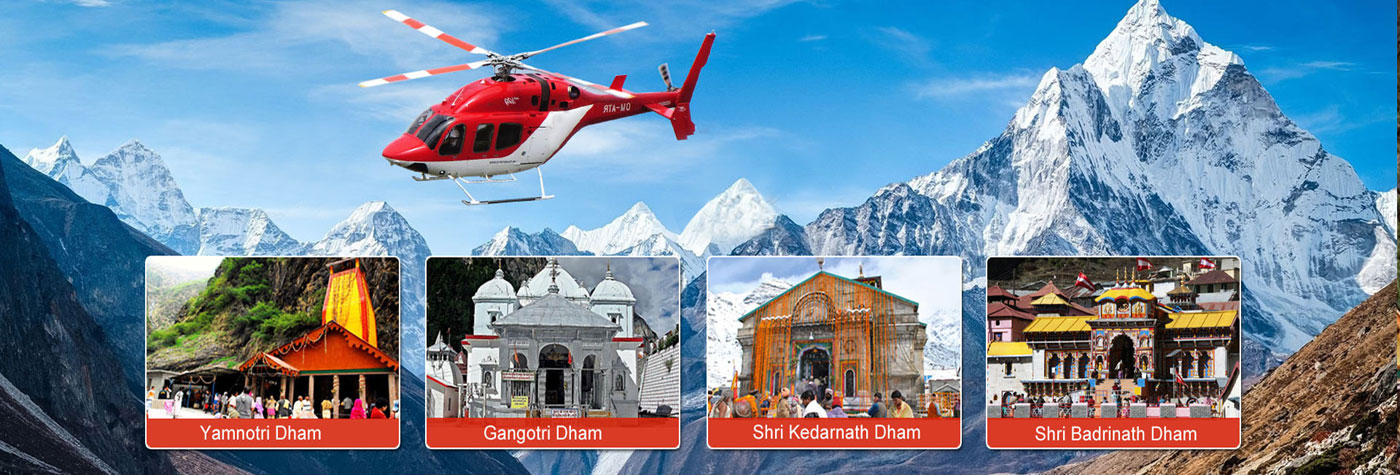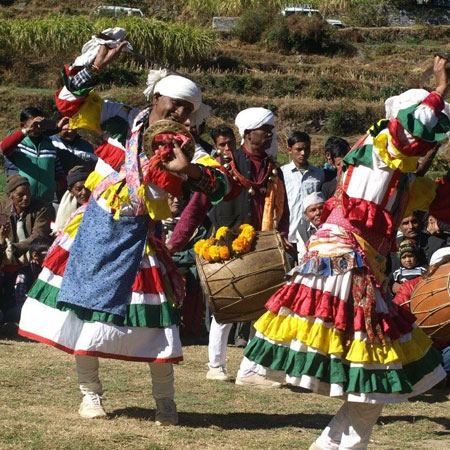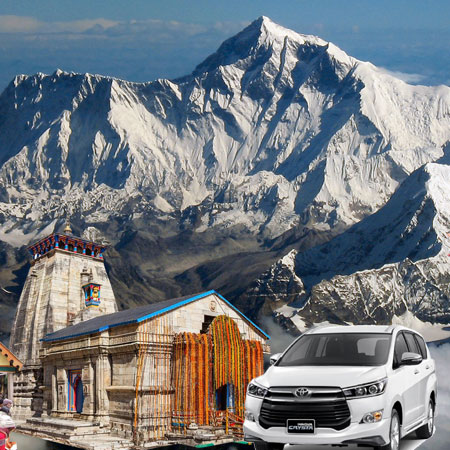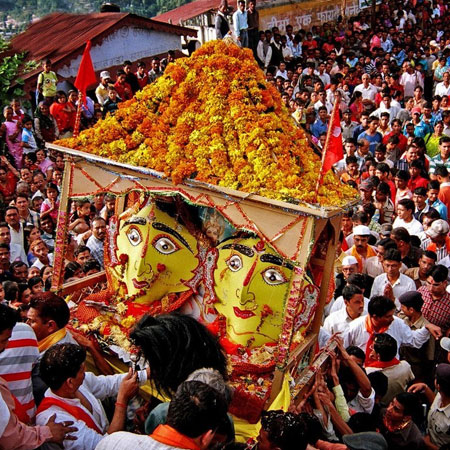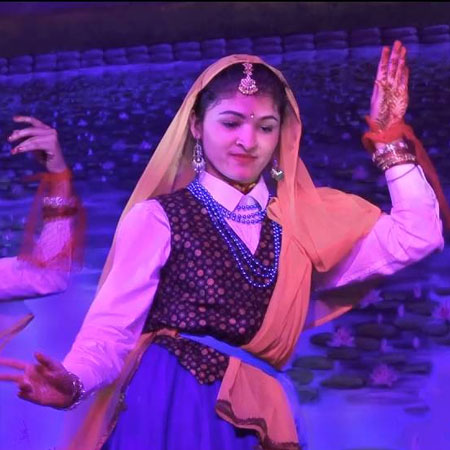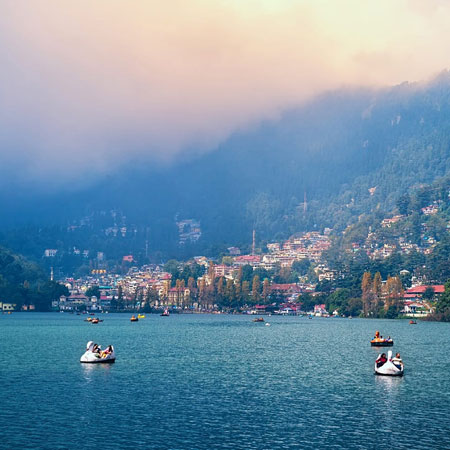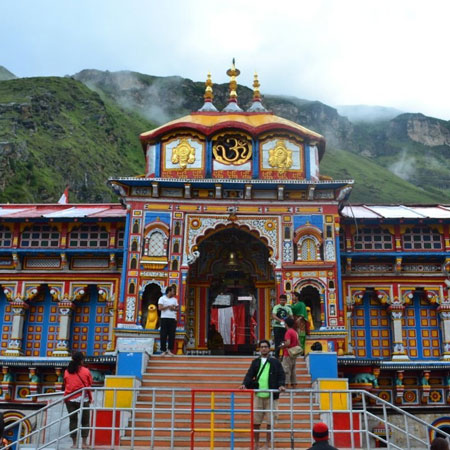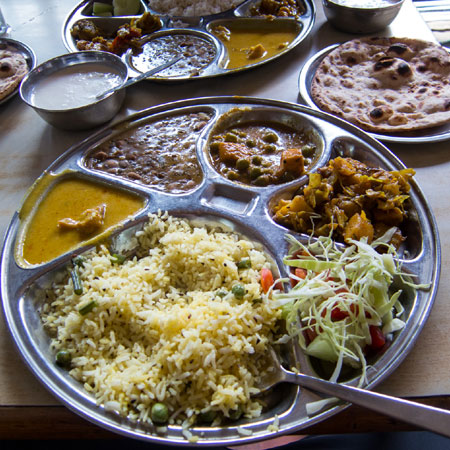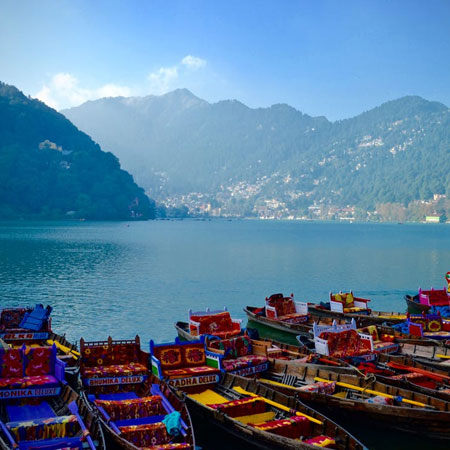Rivers and Lakes Uttarakhand
All civilizations have drawn life out of rivers. Rivers have played the most important part in the survival and prosperity of all civilizations in human history.
The rivers of Uttarakhand are no exception in the wholesome bounty they bestow as they flow down mountainous slopes, into narrow gorges and widening into the plains. Born in the deep glacial chambers of the magnificent Himalayas, the mighty rivers of Uttarakhand have brought people together and nurtured their way of life.
If the mountains of Uttarakhand are home to the gods and the goddesses, it is only natural for the rivers rising in the lap of these mountains to carry a lot of religious significance. Many of the rivers therefore borrow names from Hinduism. The holiest of all Hindu rivers, the Ganga, gushes from Gaumukh in the Gangotri Glacier and flows on to nourish the soils of the Indo-Gangetic plain, whilst bringing people closer. A dip in the holy waters of the Ganga promises to wipe the soul’s slate clean of all sin. The confluences of rivers are considered to be extremely important sacred places to which millions of devotees flock every year.
Other famous rivers in the region include the Yamuna, the Bhagirathi and many other tributaries and distributaries such as Dhauli Ganga, Kali Ganga, Girthi Ganga, Rishi Ganga, Bal Ganga, Bhilangna River, Tons River, Alaknanda, Nandakini, Pindar, Kosi and Mandakini. These rivers, along with their tributaries, are vital for irrigation and power-generation for the state. The banks of these venerated rivers are speckled with shrines and temples and are often teeming with devout pilgrims at different times of the year, celebrating big and small festivals, anniversaries and special occasions.
Rivers in Uttarakhand
The rivers of Uttarakhand are no exception in the wholesome bounty they bestow as they flow down mountainous slopes, into narrow gorges and widening into the plains. Born in the deep glacial chambers of the magnificent Himalayas, the mighty rivers of Uttarakhand have brought people together and nurtured their way of life.
Ganga
The holiest of all Hindu rivers, the River Ganga takes shape in Uttarakhand. In Uttarakhand, the Ganga flows in many places in the form of smallest stream, rivers and tributaries. With its source at Gaumukh, the river begins in the heights of the Gangotri Glacier.
The glacial waters then take a 25 meter plunge into the Gauri Kund, from where the river starts her cross-country journey, which terminates at the island town of Ganga Sagar in West Bengal. The Ganga river system drains a large chunk of the Himalayas right from the eastern slopes of the Shimla ridge to eastern Nepal, which is actually the central Himalayas that incorporates the Kumaon and Garhwal regions. With its famous tributaries, the Yamuna and Kali, three smaller river systems are formed, namely the Yamuna system, the Ganga system and the Kali system. The river in its upper stages is known as Bhagirathi. As it flows down, it acquires different names crowned with religious significance. Before merging with the ocean, the river divides itself into several streams and drains into the Bay of Bengal. Also merging with the Ganga here is the River Brahmaputra.
The Ganga assumes other names here, such as the Padma and the Meghna. Hindus believe that a dip in the holy waters of the Ganga purges mortal souls of all sin. The Ganga is not just an attraction for soul-searching pilgrims, but is also a very popular hub for water sports. The raging rivers are perfect for adventure enthusiasts who can get their fill of thrill with white water rafting in the upper reaches of the river, where rapids are many and challenging. If hurtling over steep rocky river terrain on speedy icy waters isn’t your thing, other river activities like boating or kayaking can be enjoyed.
Yamuna
The Ganga isn’t alone in her holy flow. The great river splendidly branches out into tributaries and distributaries that go on to flow in their own enlivening ways. River Yamuna is a tributary and rises in the Yamunotri Glacier, at a height of 6,387 meters in the Uttarkashi district, in the flank of the south-west slopes of the Bandarpunch peak in the lower Himalayas. Some say the source of the river is the Saptarishi Kund, a glacial lake. The Yamuna and its tributaries also form part of the Ganga catchments. The Doaba region drained by the Ganga and the Yamuna is considered to be one of the most fertile regions in the Indian sub-continent.
It drains Western Garhwal, broadly covering almost half of Western Uttarkashi, a small part of the Tehri Garhwal and about two-thirds of the western regions of Dehradun. It travels a total length of 1,376 kilometres, draining practically forty percent of the entire Ganga basin, before merging with the Ganges at Triveni Sangam, Allahabad, the site for the famous Kumbh Mela. This site is believed to be the place where Hanuman offered penance. The Yamuna is sometimes considered to be even holier than the Ganga, because it was here that Lord Krishna spent a lot of his childhood. Like the dip in the Ganga, it is believed that bathing in the Yamuna will release the soul of all sin, and further its progress toward emancipation.
Alaknanda
The source of the Alaknanda lies in the ranges above the temple town of Badrinath. The river emerges from between the twin peaks of Nar and Narayan. It is believed that the 8th century religious reformer, Sri Adi Shankaracharya was visited by Lord Vishnu at the banks of the Alaknanda.
Upon Lord Vishnu’s request, Shankaracharya is said to have retrieved a stone idol of the god and mounted it in the Badrinarayan temple. The stretch of the Alaknanda River that flows through this centre of pilgrimage is also known as the Vishnu Ganga. The other major tributaries of the Ganga are Dhauli Ganga, Rishi Ganga, Bal Ganga, Bhilangana, Mandakini, Pindar and Mandakini.
Bhagirathi
Originating from the Gaumukh is the source stream of the River Ganga that transforms into a turbulent river. The headwaters of the River Bhagirathi are born in the region of the Gangotri and Khatling Glaciers in the Garhwal Himalayas. From here, the river flows for about 205 kilometres before meeting the Alaknanda River in the town of Devprayag.
As it flows downstream from this sacred confluence, the river is known as the Ganga. White water rafting and kayaking are popular on the Bhagirathi, and in fact, the river expeditions on the waters of the Bhagirathi are some of the best rafting experiences to be enjoyed. Some of the famous rapids include the “Elephant Rock”, “The Chute”, “Sharp S”, “Confluence Rapids” and many more, up to Devprayag.
Ramganga
Like the Kosi, Ramganga is also a river of the Ganga system. It drains the western parts of Almora and south-east portions of the Garhwal district. It rises in the slopes of the lower Himalayas in central Kumaon on the south-east side of the water divide of the Alaknanda River.
It flows through the Dun valley of the Corbett National Park and joins the Ganga near Kannauj in Uttar Pradesh. The Ramganga’s course through the Corbett National Park sprouts flora and fauna amidst a wilderness brimming with dense forests, which are home to endangered tigers, leopards, elephants and over 600 species of birds. Fish like the Golden Mahseer and Gounch (Cat Fish) swim in the waters of the Ramganga and the river is renowned all over the country as the angler’s paradise
Lakes in Uttarakhand
The rivers of Uttarakhand are no exception in the wholesome bounty they bestow as they flow down mountainous slopes, into narrow gorges and widening into the plains. Born in the deep glacial chambers of the magnificent Himalayas, the mighty rivers of Uttarakhand have brought people together and nurtured their way of life.
Naini Lake
Nainital Lake is a sparkling gem in the splendid Himalayan kingdom. This picture perfect region of nature is dotted with many lakes, earning it the distinction of being known as the ‘Lake District of India’.
Nainital Lake is an important lake of this region. This lunar-shaped natural freshwater lake was born from a depression in the Nainital town of the Kumaon region, owing to tectonic movement. The lake is fed by freshwater streams from the upper slopes and is surrounded by peaks blanketed with vegetation, characteristic of high altitude vegetation such as conifer forests and pine.
Nainital Lake is one of the four major lakes in the Kumaon hills, the three other being Sat Tal, Bhimtal and Naukuchiya Tal. Three mountain peaks border the lake, namely the Naina Peak on the north-western front, Tiffin Top on the southwestern front and snow-capped peaks on the northern front. This enchanting lake is Nainital’s tourist hot spot, with yachting and boating being very popular activities. All the elite hotels are in the lake’s vicinity and it is also a popular recreational spot.
Bhimtal
Situated 22 kilometers from Nainital, at an altitude of 1,370 metres, Bhimtal is a small town in the Nainital district of Uttarakhand. It is named after Bhim, one of the five Pandavas mentioned in the Hindu epic, the Mahabharata. With its intimate association with history and interesting tourist spots, Bhimtal is a popular tourist destination, with the most prominent attraction being the ‘Bhimtal Lake’, which is larger than the famous Naini Lake. The emerald green waters of the Bhimtal Lake mirror the lovely greenery of the surrounding hills and conjure a striking view. Spread over a vast area, Bhimtal Lake is home to a rich diversity of aquatic life.
During the winter months, the lake is visited by migratory birds. Boat cruises are an excellent way to soak in the beauty of the place. Located on the banks of the lake is the famous Bhimeshwara Temple, dedicated to Lord Shiva. It is believed that Bhim actually constructed the temple himself. However, the temple was reconstructed in the 17th century by Baz Bahadur of the Chand Dynasty.
Close to the temple lies a small hill called the Garg Parvat, which is the source of the Gargi River. Another famous spot in Bhimtal is the hill of Karkotaka, known for its ‘Nag Temple’, visited by devotees on the auspicious day of Rishi Panchami, to seek the blessings of ‘Nag Karkotaka Maharaj’. About five kilometres from Bhimtal is a small hill known as ‘Hidimba Parvat’, named after Bhim’s wife, Hidimba. Today, the hill houses a beautiful wildlife sanctuary, known as Vankhandi Ashram. Within a range of two kilometres from Bhimtal, lies a small natural lake called and locals consider this place to be sacred. Apart from that, the Nal-Damyanti Tal is also known for being a popular picnic spot.
Naukuchiya Tal
Naukuchiya Tal is perhaps the most beautiful lake in Uttarakhand. This unique nine cornered lake lies in the foothills of Kumaon, at an altitude of 1,219 metres, and is 24 kilometres away from Nainital. Fed by an underwater spring, this lake is surrounded by dense oak forests on all sides. The locals believe that whoever sees all the corners of the lake at first glimpse, at once attains Nirvana. It is also ironically believed that no mortal can ever see the nine corners simultaneously.
Naukuchiya Tal is not only laden with picture-perfect natural beauty, but also offers tourists the opportunity to explore and discover the varied biodiversity and species of wildlife contained in its mesmerizing tranquility. Uncommon adventure sports like angling, trekking, bird-watching, paragliding and parasailing attract a major chunk of visitors to this place.
Hemkund Lake
The Hemkund Lokpal Lake at the cirque floor of the Saptshringi Glacier. Surrounded by seven snow-crested peaks this large glacial lake reflects these blissful and divine surroundings on its sparkling and lucid waters. The lake is nourished by glaciers from Hathi Parvat and Saptrishi peaks. A diminutive stream flows out of this lake and is known as Himganga. Lying in the upper reaches of the Charmoli district at a height of 4329 meters, in Garhwal, it is a well known pilgrimage site for the Sikhs, since Hemkund Sahib is located on its banks. Hindus and people from other faiths also hold it in high esteem. A temple dedicated to Laxman is also built on the banks of this lake
A steep and demanding trek of some six hours leads to this divine lake. History has it that a Sikh hawaldar in the British army discovered this lake in the late 1920’s after which it turned into one of the most sacred pilgrimages of the Sikhs and Hindus alike.
 +91 9799050299
+91 9799050299 
